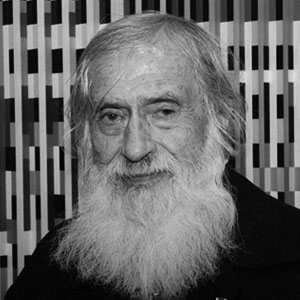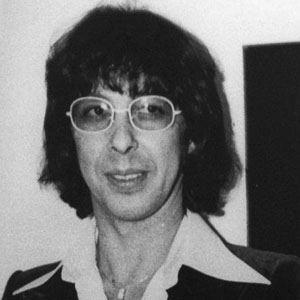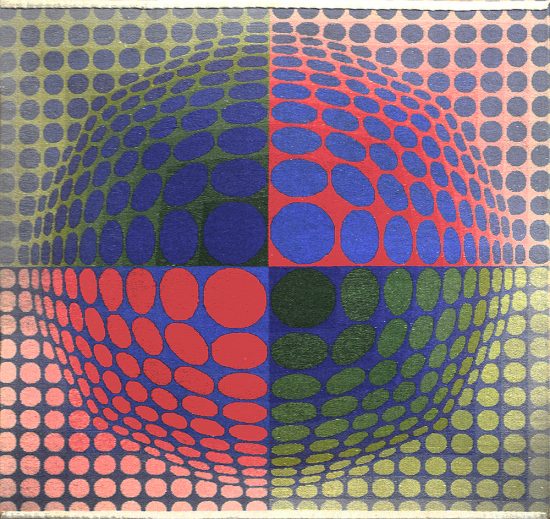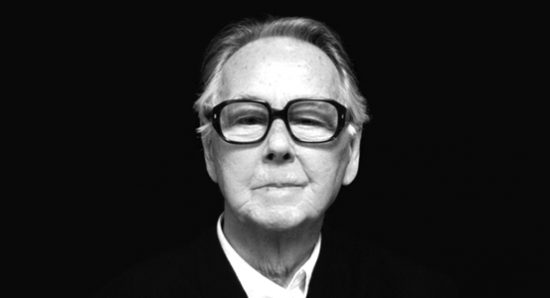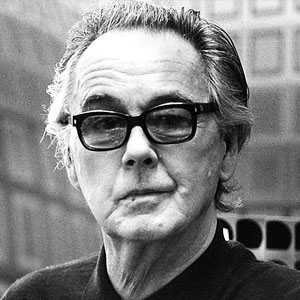
A personal recollection (by Alex Adelman): I was very fortunate to have met Victor Vasarely several times and will always remember him as a very warm, funny, charming, intelligent man. However, what struck me most about him was that he had a child-like innocence and wonderment toward both people and the world around him. The last time I saw him, a year or so ago, I remember fondly watching him play Yvaral several games of chess. Needless to say, he beat Yvaral each time! We shared a glass of wine, chocolates and then he entertained us with Hungarian folk songs. It was a truly fun and memorable occasion!
Considered the father of the Op Art, artist Victor Vasarely was born on April 9th, 1908 in Pécs, Hungary. Internationally recognized as one of the most important artists of the 20th century, his innovations in color and optical illusion have had a strong influence on many modern artists. Spanning most of his career, our collection of his prints and sculptures explores his forays into some of his most famous works such as the plastic alphabet and other iconic periods.
In 1925, Vasarely was accepted into the University of Budapest’s School of Medicine where he attended for 2 years. Deciding that he wanted to take his life in a different direction, he enrolled in the Poldini-Volkman Academy of Painting in 1927. Though a medical education might have seemed superfluous compared to his new career in art, the time that Vasarely spent in medical school gave him a strong basis in scientific method and objectivity. This basis continued to manifest in his unique style of art.
After the artist's first one-man show in 1930, at the Kovacs Akos Gallery in Budapest, Vasarely moved to Paris. For the next thirteen years, he devoted himself to graphic studies. His lifelong fascination with linear patterning led him to draw figurative and abstract patterned subjects, such as his series of harlequins, checkers, tigers, and of course the Vasarely zebras. Also during this period, Victor Vasarely created multi-dimensional artworks by super-imposing patterned layers of cellophane on one another to attain the illusion of depth.
Around 1947, Vasarely discovered his place in abstract art. Influenced by his experiences at Breton Beach of Belle Isle, he concluded that “internal geometry” could be seen below the surface of the entire world. He conceived that form and color were inseparable.
"Every form is a base for color, every color is the attribute of a form."
Forms from nature were thus transposed into purely abstract elements in his paintings.
Already an established and recognized avant-garde artist, Galerie Denise Rene hosted a major group exhibition in connection with Vasarely’s painting experiments with movement. This was the first important exhibition of kinetic art and included works by Yaacov Agam, Pol Bury, Soto, and Jean Tinguely, among others.
During the 1950’s, Vasarely wrote a series of manifestos on the use of optical phenomena for artistic purposes. Together with his paintings and prints, these were a significant influence on younger artists. According to the artist, “In the last analysis, the picture-object in pure composition appears to me as the last link in the family ‘paintings,’ still possessing by its shining beauty, an end in itself. But it is already more than a painting, the forms and colors which compose it are still situated on the plane, but the plastic event which they trigger fuses in front of and in the plane. It is thereby an end, but also a beginning, a kind of launching pad for future achievements.”
Victor Vasarely Paintings
Victor Vasarely began his painting career by studying traditional academic painting at the Podolini Volkmann Academy. However he soon became unsatisfied with being confined to academic painting and enrolled in the Bauhaus Muhely Academy in 1929. Bauhaus trained its artists to create paintings based on foundational geometric forms such as the cube, rectangle and the circle. The works during 1930-1944 tend to be figurative and graphic. A prime example is L’Echiquier (The Chessboard), 1935. This painting imitates the form and color of a chessboard which Vasarely distorted to appear three-dimensional. For Vasarely, this laid the foundation for his Zebres (Zebras), 1937 series. The initial work of this set, titled Zebra, is considered one of the earliest examples of optical art. Vasarely also experimented with cubist, futurist, and surrealist painting briefly in 1944; however he abandoned these styles in favor of optical art. His op-art paintings are distinguishable by their hypnotizing colors and distorted surfaces. The repetition of geometric form is heavily used as well. Of his group, the best known are Vega, 1957, Gestalt, 1969 and The Plastic Alphabet, 1960-65
Victor Vasarely Sculptures
Vasarely ventured into sculptures later in his career. Sculpture presented an exciting possibility of creating an even more dynamic optical experience. Given the illusionistic quality of his painted works, it is no surprise Vasarely ventured onto this new medium. For his sculptures, Vasarely used lucite and glass to enhance the multiplicity in his images. Additionally, he oftentimes created stacked figures that incorporated his geometric designs and merged them onto a shaped canvas, combining his painting and sculpture. The sculptures vary in size and are very popular with collectors.
Today, Victor Vasarely’s prints, paintings, collages and sculptures are celebrated in numerous exhibits all around the world.

